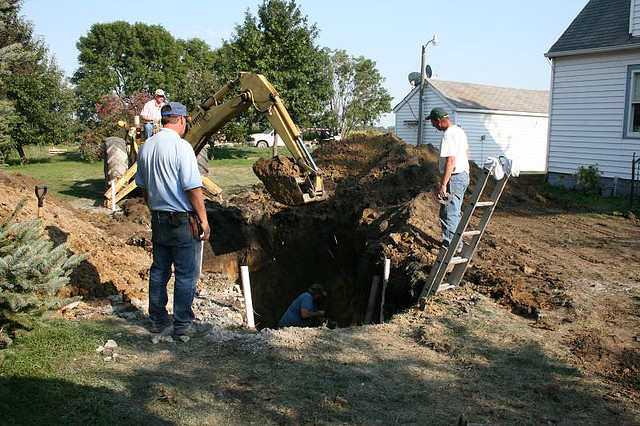Geothermal heat pumps are the most efficient way to heat and cool your home, but homeowners know remarkably little about the anatomy of a geothermal system. Here are the basics of what you need to know about a typical geothermal system, there are three main parts: the energy supply source, the heat pump itself, and the energy distribution system.
You should also know that geothermal heat pumps harvest their energy from the ground, and this makes them a renewable energy source that can cut your home heating costs by up to 75%. Interested in learning more? Keep reading this crash course to learn the basics of geothermal heat pumps.
Three Main Parts of the Heat Pump:
Energy Supply Source
The first part of a geothermal heat pump system is the energy supply source, commonly referred to as the ground loop. The ground loop is how the heat pump harvests its heat from the ground. A ground loop consists of plastic piping buried in the ground in either a horizontal or vertical configuration. This piping has fluid circulating in it that absorbs heat from the ground all year long.
The Heat Pump
The geothermal heat pump is the part of the system that does the heavy lifting. It extracts the heat from the ground loop and concentrates it using its compressor. The heat pump then transfers this concentrated heat into your energy distribution system in your home.
The Energy Distribution System
Your home will most likely have one of the two possible energy distribution systems: ductwork or radiant in-floor heat. Let’s start with ductwork.
Ductwork is the most common energy distribution system. This system uses the heat pump to transfer the concentrated heat into the air stream, where it blows into the ductwork in your home in the form of warm air.
If you have a newer home or are building from scratch, radiant in-floor heat is another option for you. In-floor systems distribute heat using piping installed beneath your floors, usually in the basement or on the first floor of your home. In this case, the heat pump transfers the concentrated heat into the water that is circulating through these pipes. The warm water circulates throughout the floor, where it radiates heat into your home.
Whether your home has ductwork or radiant in-floor heat (or both) will determine which heat pump is right for you, but we make models suitable for all scenarios.
How Geothermal Heat Pumps Save You Money
Let’s break this down: geothermal heat pumps harvest free heat that is present in the warm earth year-round. There is no combustion and no fuel purchases. The only input is the electricity to run the pump that extracts the heat, the rest is free. That’s why geothermal heat pumps are so efficient.
In fact, for every one watt of electricity you use to run the geothermal heat pump, it will harvest an additional three watts of heat energy from the ground, for a total of four watts. This heat is available year-round because the temperature six feet below the surface of the ground stays consistent, even in the coldest winters. This consistency makes geothermal heat pumps the perfect choice for cold weather heating.
What you just read is a very brief overview of how geothermal works, but there is so much more to learn. To find out more about how you can harness the free heat beneath your feet, download our free Ebook: Geothermal Energy: Consistent, Comfortable, Cost-Effective Heating and Cooling For Your Home.


